By: Ashley Rivas
I was first introduced to Mender’s Strife as a judge for the Seattle Indies Expo. I was delighted by the aesthetic, which very deliberately stayed 8-bit throughout. Cracking into the admittedly zany humor made me wonder what kind of team had pulled jokes like these out of their brains, and the game stuck with me well after judging was done.
I reached out to the team responsible for this delightful adventure, Took 2 Long Productions, and was ecstatic to hear that they’re like so many other indie devs out there: balancing a passion for game design with actual real-life bullshit like having to work jobs, pay bills, and adult things that are miserable. But they’ve done something many devs juggling jobs haven’t done, and that’s push something into real, actual production. And I wanted to hear about how they got to that point, and how they plan to keep going from here.
Mender’s Strife is an upcoming 8-bit RPG set in a fantasy world. The main character, Marah, rejects her lineage as a healer and starts to discover that powers are manifesting, whether she wants them or not. The game injects snark in equal measure with gravitas, and is the first developed outing for the Took 2 Long team. Don’t want to give tooooooo much away now, since I’m reviewing the demo soon!
Our chat started with a very brief text discussion on whether or not pants would be required for the call. And if that’s not a good sign for an interview, then I really don’t know what is.
Dramatis Personae: Who are these weirdos?
Jeremy Jones (co-founder, composer, programming consult): Oh Skype…I don’t know, my newer laptop doesn’t boot me like this. It logs on automatically, but not all the time.
Micah Goodwin (co-founder, graphic designer): It’s like a bumper sticker, my other computer is a working one.
Jeremy: It looks like the helm to the starship Enterprise.
Micah: Or the back view of a Volvo.
Jeremy: I’ve had it for several years! But I think it’s time to retire it. The screen is 3 times bigger than the laptop, though.
Ash (Principally Uncertain): That’s an advantage.
Micah: You could plug a screen into the laptop.
Jeremy: Or my 55” TV.
Ash: If you’re gonna go for it, go big.
Jeremy: I’ll try to mute myself if you hear a toddler come in.
Ash: I have 3 dogs, I understand that struggle.
Micah: I have a 20-year-old son.
Ash: That’s the same as 3 dogs. Equivalent noise volume and food consumption.
Jeremy: Who wants to start? I’ll start, actually. I am Jeremy Jones. I started as the musician, and the composer, and I’m now the co-founder / demo programmer / real programmer / organization leader / composer.
Ash: That’s quite the set of hats.
Jeremy: Part of that gets filtered down, or assigned to other people, but starting out, those are the little things I work on while they come up with the rest of the game so I can write music for it. Tom, who isn’t here, is my cohort. He’s a chiptune master—I call him the chiptune god. He takes the music I compose and chiptunes it. He’s also writing some original music. And he’s a map designer. We have many hats, we kind of do everything.
Micah: I’m Micah Goodwin. If you see something in the game, I did it. I do all the graphics, character design, ground design, level and interior mapping. Tom’s better at mapping, I’m horrible at it. My idea of a dungeon is you walk in and see the boss, which is great for some people, but not for 60 hours of gameplay. I’m also the monster designer. We’ve all come up with ideas for monsters, though. Tom asked if I could draw a “Refrigera-Thor”. So I drew a fridge with massive muscle arms holding a hammer. Standard hammer with a claw.
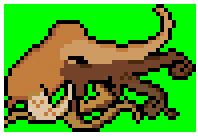
OCTO-SPRITE! An example of Micah’s work that we here at P? really enjoy.
Ash: Like a working-class fridge’s hammer.
Micah: Exactly.
Laura Hardgrave (lead writer): I’m Laura Hardgrave, the lead writer, but Roy helps me a lot. I write the script, and the outline, and manage the website.
Jeremy: We have Roy, too. He’s a programmer in training.
Roy Rouell (asst writer, asst programmer): When I have a computer I don’t want to throw in a brick wall. When I get the one I want, it should take it a year or two before I want to break it. But I’m Roy Rouell, assistant story writer. I focus on side missions, and the Wilson games.
Micah: There’s your scoop!
Roy: I’m also the one who comes up with the really weird ideas.
They do have IRL jobs
Ash: You guys did mention your roles, and you all have a lot of them, which is typical of an indie dev team. Are you working roles in conjunction with fulltime jobs?
Laura: Most of us have fulltime jobs.
Ash: How do you guys achieve balance? You’ve made a lot of progress on the game, so how has that happened?
Laura: It’s hard!
Micah: Where I work, I wait for phone calls. I can make sprites while I’m at work. It works for me, but not for everyone.
Laura: Jeremy and I have weeks where we don’t get anything done. Life happens. I try and get writing in every weekend, whether it’s the outline or the script, but it’s a struggle. But we love this, and we’re willing to find the time to get it in.
Jeremy: I’m a librarian by day and a pastor, which is its own little thing. I’m the worst pastor ever.
Roy: I think Jim Jones gets that one.
Jeremy: It is hard to fit things in. I’m really passionate about this, especially the music. That’s what draws me. Originally we had a programmer, but his plate was too full and he had to step back. I know the engine we’re using pretty well from the fan games we made a while ago, so I did the demo. I may do the whole thing. But it is hard to find time, especially with a 2-year-old. I balance it mainly by setting a schedule for myself. It’s my personal schedule—I set an hour every other day to work on a certain project, and not working on the music right now makes that a little easier. Music isn’t something you can really schedule.
Ash: You guys are pretty spread out—Oklahoma, California, Seattle. How do you guys stay in constant communication?
Roy: We love Skype and Facebook!
Jeremy: It also helps that Micah, Laura, Tom and I have been friends for 18 years. Roy and I have been friends for a long time too. We met online in a forum dedicated to making fan games and other creative projects.
Micah: That’s the real reason we’re called Took 2 Long Productions.
Jeremy: Roy is a natural fit with us. We’re all weird. Micah and Laura came down for my wedding, and we first met in person when I graduated from college.
The first project: Final Fantasy fan games
Jeremy: I’m in love with those games.
Micah: Yeah…yeah.
Jeremy: I still want to finish it.
Ash: You mentioned two of them, did either of them get released?
Micah: Both of them actually. The first one could’ve been better, but the second one, I learned from the first. They’re both cheaply made Final Fantasy sprite based fan games.
Ash: Was that one of the first times you guys worked together?
Micha: I don’t remember, that was 1999.
Laura: It was mostly Micah. He had help with the music though.
Micah: We started this game, Mender’s Strife, as a joke. I took Final Fantasy 3 tiles and sprites and made an 8-bit fantasy. After a couple of days of building on it, I realized that if I drew tiles myself, I could make something sellable. That’s how the game started.
Jeremy: I wrote the title theme at some point, and that’s when it clicked.
Micah: It was really good! We told him to do the world theme, and he did.
Laura: Somewhere along the way I got roped in.
Micah: We needed a professional writer. My scripts are terrible.
Micah: At some point with the fan games, we decided that getting paid is better.
Jeremy: Life happened. We didn’t have a plan. But with this game, we have a plan, thanks to Laura especially. We have an outline. We’re approaching this from a professional standpoint.
Laura: We have a design document!
Jeremy: With the other projects we didn’t have anything like that. It’s kept us focused.
Micah: The other projects didn’t even have scripts.
Jeremy: Those were a mishmash. This one has Roy writing side quests, even.
Organizing from the start
Ash: You guys mentioned how the organization for this has made it move forward differently than fan productions. How and when did you implement that?
Micah: While were in development. We knew from the beginning that we wanted to put this out, and that we had to do it the right way to get there.
Jeremy: Begrudgingly. We’d gotten relatively far, and Laura had an outline, and we’d realized that before we got farther, if we were serious about doing this game, we needed to do it right. So we formed the game design document, which started as a baby and expanded.
Laura: We started talking about goals, and what we wanted out of the project.
Micah: Things we had to keep in mind but allude to, or things about the story as it progresses. We have ideas for a series of games that would all hit on this idea. If nothing ever comes past the first game, it’ll be okay.
Ash: What were some of the important goals in your game design document, the ones you really wanted to focus on?
Jeremy: We started with this 8-bit idea, and while Laura wrote the script, it was really full. Someone commented on it and said the dialogue was too long, and didn’t fit with an 8-bit style. So our goal was to use the 8-bit style to give reference, and nostalgia, but we didn’t want to limit ourselves to that style.
Ash: You didn’t want to stick with the 8-bit conventions and tropes. Which is smart, since we’re in such a different time for gaming right now in terms of mechanics and style.
Micah: Right. We also didn’t want things like modern quest trackers. We can do them, but we won’t.
Jeremy: We tossed around ideas like that. The demo has a dot indicating a quest giver that’s relatively apparent.
Ash: How do you decide that balance between modern implementations and staying within the 8-bit style? Do you base it on what you like, or fan feedback?
Laura: Bit of both.
Jeremy: Modern gamers, even gamers from that era like us, are now used to more current conventions. We think differently today. We decided to do things like the indicators, so people will move around and see someone they need to talk to.
Laura: We decided on that for side quests only.
Micah: If you pay attention to the main story, you’ll know where to go next. If you don’t, reset.
Jeremy: But to go back to balance, we’re working it onto our plan. I haven’t started coding on the main game quite yet. I’ve started settings things up, but we’re waiting for our design document to be closer to done so we can get the core. Then it’ll be more of a breeze to go from there. But it’s exciting to see what we’ve come up with for characters and abilities. We have to talk and tone ourselves back. We realize something is impossible to program.
Micah: Our dreams have outpaced our ability.
Ash: That’s a common indie dev problem. You get excited, and then feature creep begins to happen. You might not have the time or ability to add something in. How do you guys rein that in? You’re still so early in making the game, so how do you tell yourselves to stop something, or go forward with it?
Micah: If Jeremy can’t find a plug in or code it, we don’t do it. We had an idea for Mara, when she draws a power from the enemy, it erases what she has. She could only have one power at a time. But we realized that we could also have her keep a class of magic at all times. If you pull a healing spell you’re a healer, or if you pull an attack one you’re an attack class. But how do we program that?
Jeremy: We’re still discussing the minutia on that. Her powers also clue you in to the story, and you realize that there’s something more to her because of her abilities. Throughout the game she’ll grow in terms of abilities, in story and in skill. However, we decide to accomplish that is what will come out, and I have a feeling that we’ll go simpler since this is our first major outing. We can always be flashy later.
Ash: I got great advice from another indie dev who said he’d rather have one fully functional feature as opposed to three half-baked ones. There are so many games, especially on Steam, that could be great. But they try too much, and can’t execute fully on any of it.
Jeremy: Exactly. I like our battle system, for instance, but we might tweak it to make it more our own. But we don’t want to go overboard. We talk ourselves into a corner sometimes. We have to go back and really think about something. Laura is upset that we spend thirty minutes making something only to erase it. I know, I know, but that’s how we work. We have to talk about it first.
Ash: Sometimes things get made, but they get put in a trash can when you’re done. That’s the majority of indie game development, or game development in general.
The Seattle Indies Expo process:
Ash: I encountered your game as a juror at SIX. How was the process on your end? How was the jurying and feedback?
Micah: There was one juror who didn’t like the graphics and said it was crap.
Roy: It was a more pleasantly worded version of that. He wanted it to be new and shiny, really.
Jeremy: The process was really cool. I was very happy that they were overwhelmed with submissions and needed more jurors. Most of the comments were very well put.
Laura: Most of it was great!
Jeremy: We took it to heart. We’ve used a lot of it. For some, it’s the game we’re going for. Several jurors mentioned that the humor and the serious story wasn’t quite as balanced, but when you get to the main game, it’ll be more spread out. The humor will be touched on, not as concentrated. The unfortunate thing is that we thought we had submitted our more polished demo, 1.1, but our older one was submitted.
Laura: We are also very early in development.
Jeremy: We want to do it next year, and be further along. Most of the comments were great. I’m not going to slight that one juror on having an opinion, but it wasn’t quite as constructive. We still take it to heart. Our beta testers have comments too that we use.
Ash: It’s the most important thing that you found the process useful.
Jeremy: Right. Mostly it was well received. I’m so glad people liked the music! And we aren’t toning down the humor totally.
Laura: We’re spreading it out.
Ash: The humor / tone balance was one of my comments in your feedback too. I’m sure you had an idea of that from the beginning, but it’s hard to get that across in a demo. You have a good handle on that now.
Laura: We were so eager to get all of our good ideas in the demo that it came off a little overboard, I think.
Is this a hobby that could end up as painful work?
Micah: I enjoy doing this so much that I don’t want it to become a job.
Ash: You have to be careful. I make games, and I’m also an artist. As of right now, they’re still pretty separate. But they’re starting to blend together. I’m afraid of the outlet becoming a task and less of an outlet.
Jeremy: I can see that being an issue for some of us. But if it’s something you love, or if you can set your own deadlines, that helps. If you really love it, you might get to the point where you’re afraid you won’t like it, but if it’s your dream, you become invested. You enjoy doing it more.
Laura: There are times where you might have to force yourself to get into the mindset, or the mood, but once you’re there, you’re good.
Ash: It makes a big difference doing this full time as opposed to trying to fit something in alongside your other job, like you guys have to do. If it was full time, there would probably be a different outlook; less fear, more rampant delight.
Jeremy: It’s important to take chances too. If it’s full time, you have more freedom. You’re not limited on time, so you can experiment a little more. We want to get this game out soon, it’s not something we want out “eventually”. We’re going to set our own timeline soon that will get us from production to release date, and we want to stick to that. But it’ll be realistic for all of us.
A mixing pot of culture
Jeremy: I do want to mention that we’re really focusing on diversity. It’s important to us. We want to give normalcy to it.
Micah: If the game gets picketed by Westboro Baptists, we did our job. We’ve got main characters that are gay, and one of the major problems in the game is that Marah, our main character, is multi ethnic. She has to deal with how people around her treat her. My son is half Filipino, and I sampled his skin for Marah’s skin tone, actually.
Ash: It’s good that you’re showing that. It shouldn’t be exceptional, because it should be normalized, but the fact is that it’s not yet. But things like this help.
Micah: It should be normal, but not everyone treats people that way yet.
Jeremy: We have a male character married to a man, and in our world, that’s just the par. We don’t want to be controversial, we want it to be normal.
Micah: And that’s from a pastor!
Ash: When I realized I could have a girlfriend in Stardew, it was a part of the game. It wasn’t insane, or seen as weird by the people in the game. It was just part of life. And I loved that. That’s how it should be taken in real life, as normal.
Jeremy: It’s not to make a statement. You have to balance that too. If you want to make a statement, go 100%. But we just want to show that this is normal in this world. There’s no weirdness about it. There are some issues, like with racial tension for Mara, but that’s it. It’s about the feeling.
Ash: There’s genuine heart and thought in the game. It’s more than a retro game appeal, you’ve built something deep behind that.
Roy: We’re a diverse group. We each make up the diversity in the game. There are a couple groups where we don’t have members that fit that niche, but we are open minded enough to explore it. We have gamers, and writers, and dungeon masters. We’ve learned how to tell this story, and how RPGs flow. I’ve played Bethesda games, or Mass Effect games, and I could finally romance who I want to. We want that feel with our game. And we want the people who grew up like us, with games that didn’t hand you everything, to have that challenge too.
Wrapping up: New demo!
Ash: So where is the new demo out, if the one for SIX was old?
Jeremy: We actually just put the current demo on itch.io. It’s free, so you can check it out. Our original soundtrack is up there too if you want to hear those! 2.0 will have complete chiptunes, and the resized enemy sprites.
Ash: What’s your target date for 2.0?
Jeremy: January. I’m doing it personally, so that’s my timeline. Finished before January, launched in January.
Jeremy: Thank you, Ashley, for interviewing us. We’ll let you know how things move forward!
Ash: Thank you guys for being open to it! Thanks for taking the time to talk to me, and to share the process. I’m definitely making fan art.
Jeremy: We’ll give you scoops when we make big breakthroughs.
Laura: We’ll keep in touch!
Ash: Thank you again for letting me take up your precious time! I’m excited to see you guys moving forward from here!
Jeremy: Thank you again, it was fun!
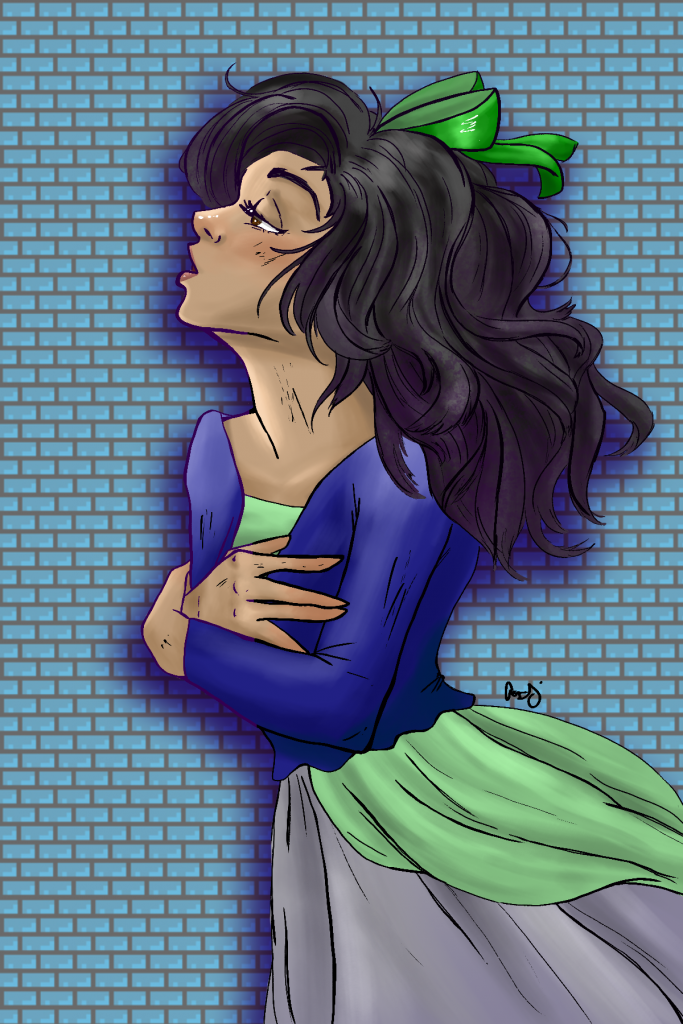
Marah, slightly higher resolution version (by Ash)!
For more on the team and their game, check out their website. You can get the demo on their itch.io page, and can stay updated on their Facebook or main site to see when demo 2.0 hits the stage!
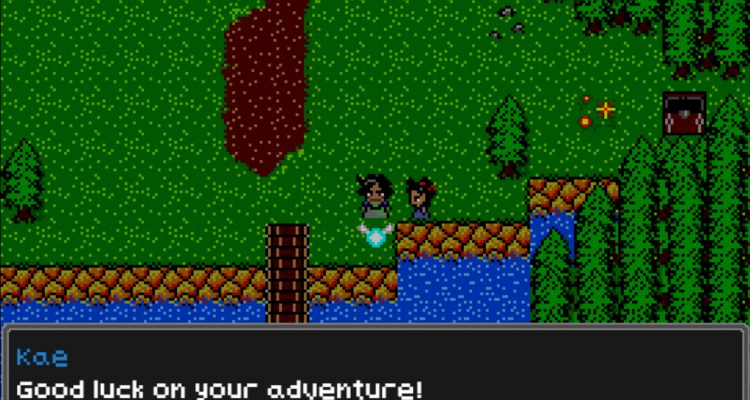
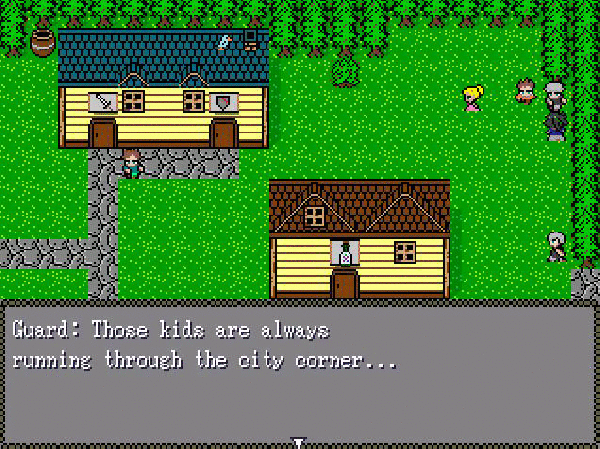


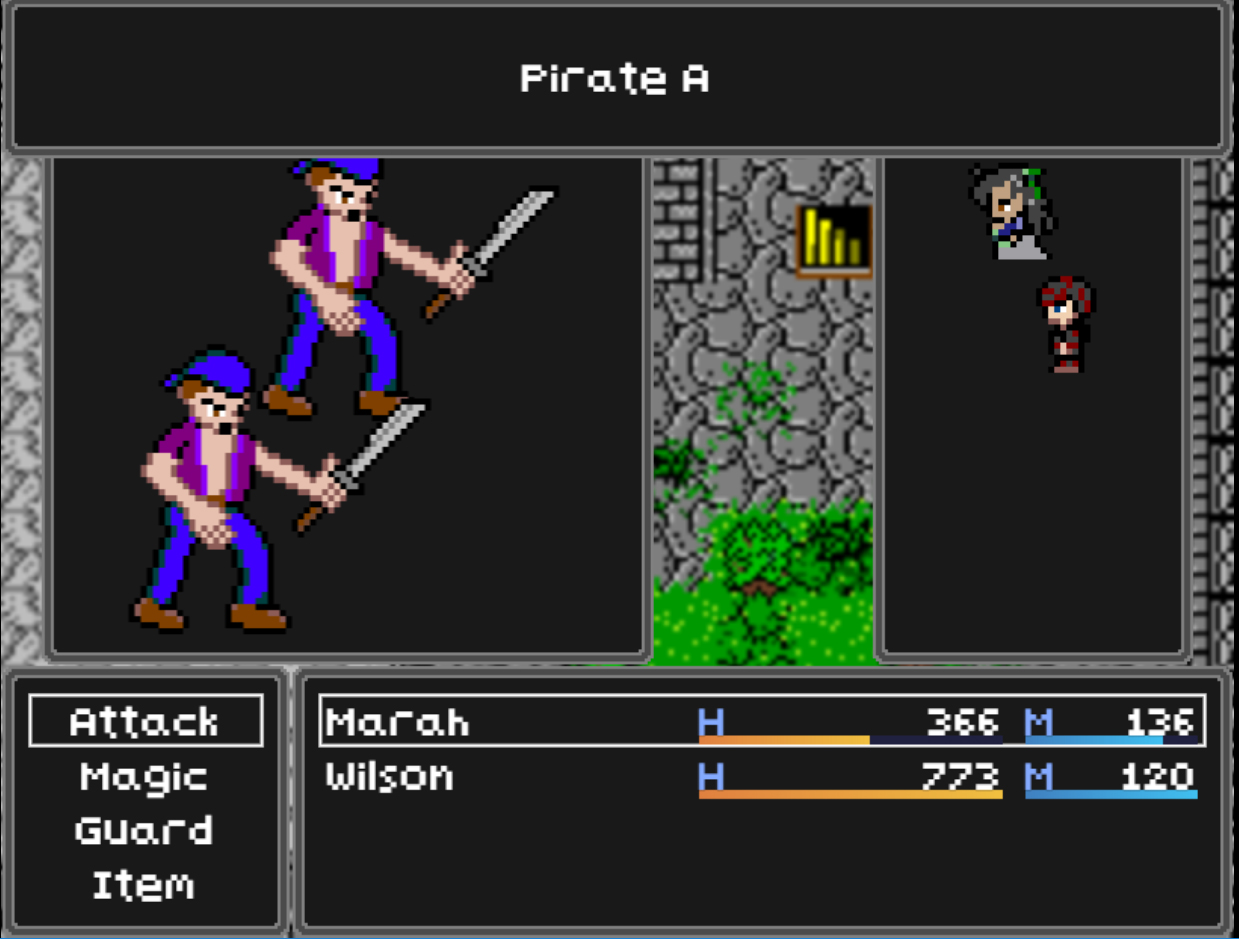
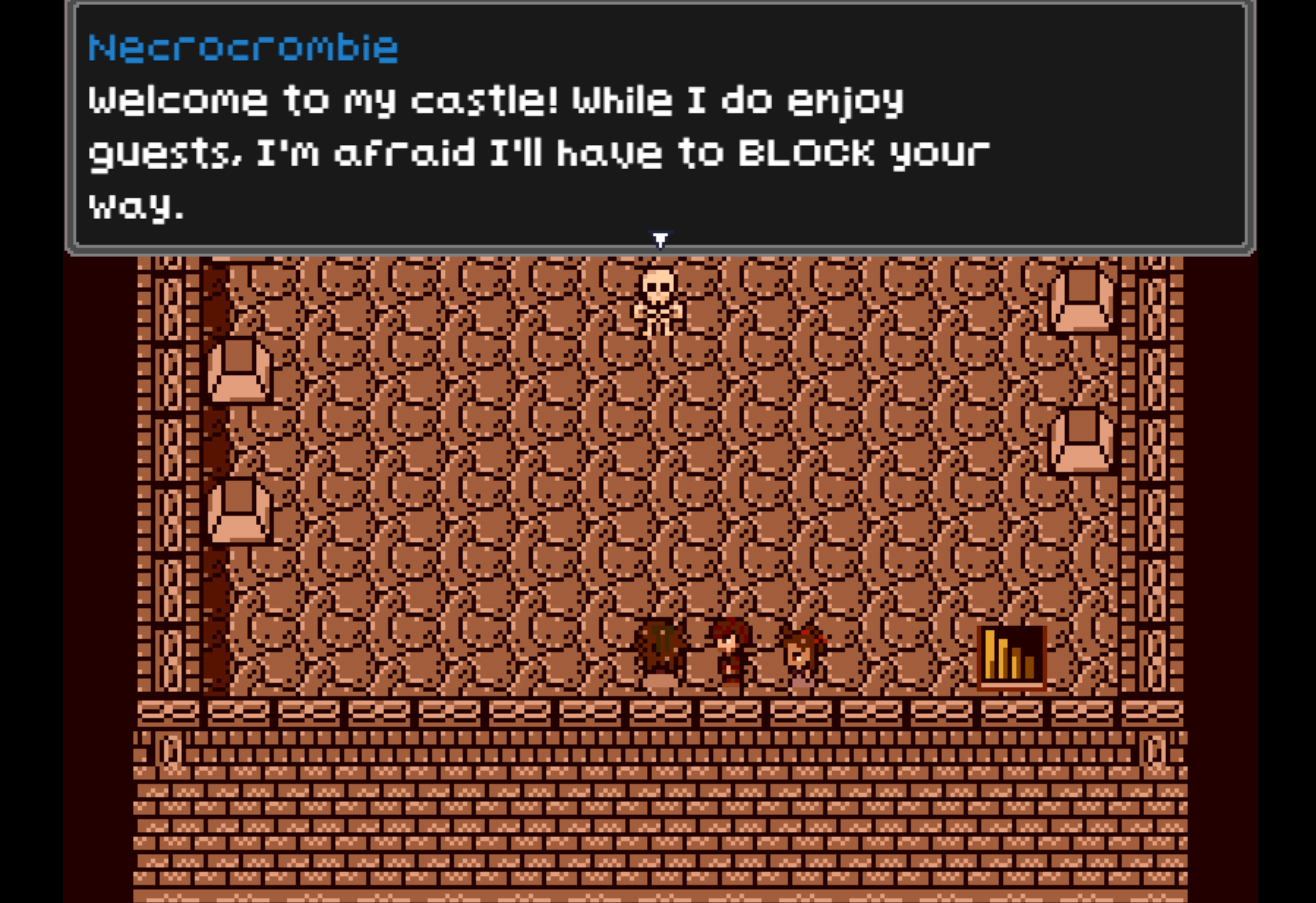

No Comments on "Getting your Indie studio’s butt in gear: An interview with Took 2 Long Productions"